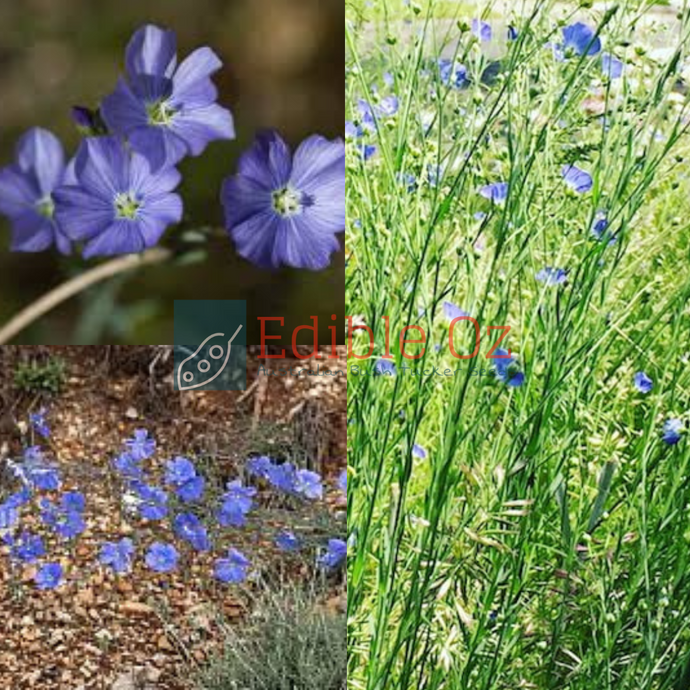
Wild Native Flax (Linum marginale) seeds
Regular price
$3.95
Sale
or make 4 interest-free payments of
$0.98 fortnightly with
 More info
More info
WILD NATIVE FLAX
Scientific Name: Linum marginale
Common Name: Wild Native Flax
Quick Facts
- Growth Habit: Short-lived perennial, typically 10–60 cm high, sometimes reaching 1 m.
- Flowers: Sky blue blooms appear in spring and summer.
- Seed Pods: Numerous edible seeds ripen in summer and autumn.
- Habitat: Woodland, forest edges, and acid swamp margins, though not commonly found.
- Hardiness: Drought- and frost-resistant.
Why Grow Wild Native Flax?
- Ornamental Appeal: Ideal for cottage gardens, rockeries, and under established trees.
- Self-Sustaining: Readily self-seeds in favorable conditions.
- Adaptable: Grows in most soil types, tolerates frost and dry spells.
Bush Food Note
-
Edible Seeds:
- Seeds can be eaten raw or cooked.
- Oily and yellowish, with a nutty flavor similar to linseed.
Other Uses
- Fiber Production: Like commercial flax, stems produce useful fibers.
- Traditional Use: Indigenous Australians used the fibers to craft cords and fish nets.
How to Grow
Planting Tips
- Position: Full sun to part shade.
- Soil: Tolerates most soil types, provided they are well-drained.
- Maintenance: Dies back in late summer, reshoots seasonally.
Care Instructions
- Minimal maintenance required; self-seeds under ideal conditions.
Germination
- Seed Viability: Retains viability for several years.
-
Sowing Method:
- Suitable for direct seeding.
- Sow at 20°C; seeds typically germinate in 3–4 weeks.
Uses in Your Garden
- Native Landscaping: Adds a natural, wild aesthetic.
- Wildlife Habitat: Supports native pollinators and small fauna.
- Functional Planting: Provides edible seeds and useful fibers.
Caution
While Linum marginale is suspected of being toxic to livestock, no documented cases of poisoning have been recorded in the field or literature.
Order Now
Enhance your garden with Linum marginale! Its delicate flowers, edible seeds, and fiber-producing stems make it a versatile and unique addition to any landscape.
